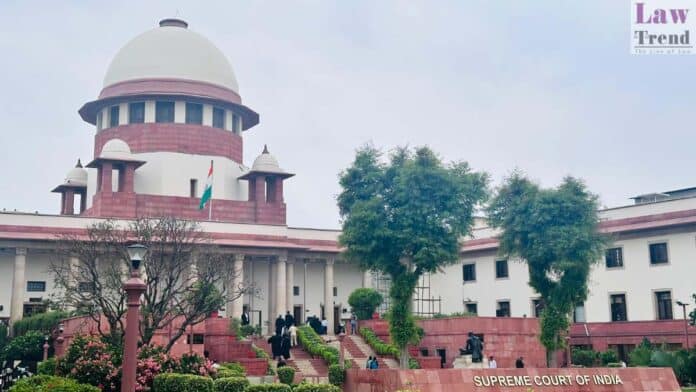The Supreme Court has set aside a Punjab and Haryana High Court order that had directed the removal of unauthorised and illegal constructions in Gurugram’s DLF City, noting that the order was passed without hearing the affected property owners.
A bench of Justices J K Maheshwari and Vijay Bishnoi observed that the High Court’s direction was issued “without joining the appellants as parties in the writ petition” and therefore violated the fundamental principle of natural justice.
“It goes without saying that opportunity of hearing is a sine qua non for fair administration of justice, and the observations of the Court should not adjudicate the rights of any parties unheard,” the bench remarked.
The Supreme Court said that the High Court’s directions—whether relating to the jurisdiction of the civil court or the removal of constructions—appeared to have been made in the absence of the property owners, who were not impleaded in the proceedings.
However, the bench clarified that this does not mean that unauthorised or illegal construction can be regularised. “Unauthorised or illegal construction for commercial use on residential property contrary to the norms, rules and regulations cannot be protected,” the court said.
The top court directed that any person likely to be affected by the High Court’s order should be permitted to join the proceedings, provided they apply within the time prescribed.
“We make it clear that if any person who is going to be affected applies to the High Court within the time as specified, they would also be permitted to join. The authorities of the State are at liberty to give wide publicity to this order for joining of the affected persons in the PIL,” the bench said in its order dated October 28.
If no such applications are made within two weeks, the Supreme Court said the High Court may proceed to examine the issue and take appropriate decisions in accordance with law.
The Punjab and Haryana High Court had earlier directed the Haryana government to take action within two months under Section 15 of the Haryana Development and Regulation of Urban Areas Act, 1975 for the removal of illegal constructions in the DLF City area.
Before the High Court, the state had filed a detailed synopsis citing numerous violations, including commercial activity in residential zones, construction beyond permissible Floor Area Ratio (FAR), and additional floors being added contrary to building regulations.
The Supreme Court’s latest ruling effectively restores an opportunity for affected homeowners to present their case before any further action is taken on the alleged violations.




